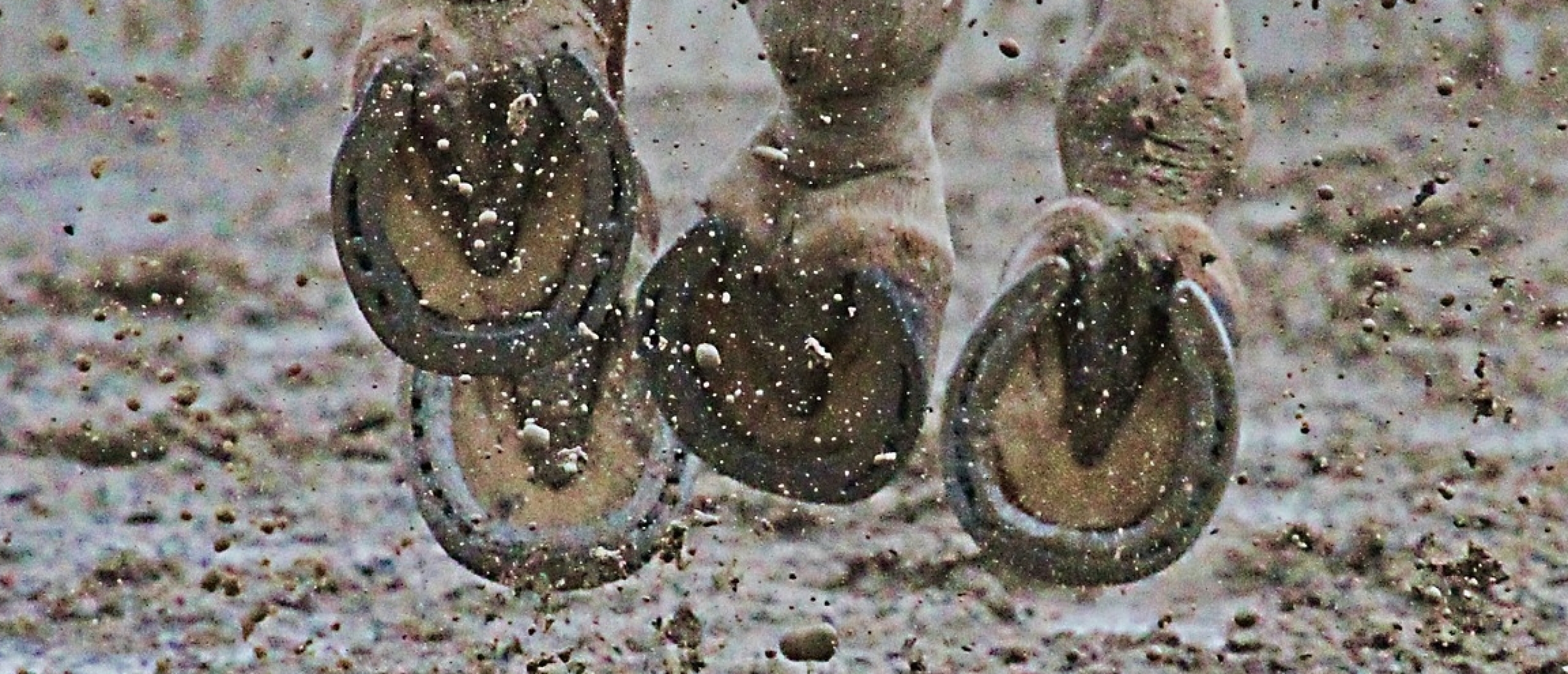
Adjusting break over for high-low feet
Influencing breakover is one of the most widely discussed topics in farriery. In the past we often had to rely on vague descriptions of what we assumed but couldn’t really see. Today’s modern techniques enable us to evaluate what we want to influence more precisely. Berni Prins shoes sport horses and horses with orthopaedic problems in the Netherlands. Since its invention, he has become an expert on how to use HOOFBEAT® Gait Analysis System for practical shoeing. The breakover process is one of the parameters that can now be accurately monitored and adapted. In the following text he will explain how he approaches breakover adjustment in horses with high-low front hooves.
Overview
We often see the process of breakover as single moment in time that can be discussed and adapted separately from other parts of the limb’s movement. In reality all the movement phases are connected, which means that changing the toe modification of a shoe to influence how the horse breaks over will inevitably influence the other parts of the stance phase – mid-stance and landing – as well. By definition, landing is the moment from first ground contact to full solar contact with the ground. Mid-stance starts at full solar contact and ends when the heels start to leave the ground. Breakover starts with the heels being lifted off the ground and ends with the toe leaving the ground. During this process the hoof first decelerates from landing to mid-stance and then accelerates again from mid-stance to breakover. As HOOFBEAT® can measure finer details than other systems that have been used for research set-ups in the past, we can see that even small changes influence how the stance phase unfolds. The influence starts with the trim and then goes on to the shape of the shoe, the position of the shoe, and so on.
High-low syndrome
Horses with mismatched front feet are a common problem, especially in some modern Warmblood types. In the past we were taught to make the feet (look) more even by not trimming too much heel on the flat foot and setting the shoe back under the toe. On the upright foot we tried to trim the heels more and use a perimeter-fit shoe with no or minimum toe modification. This led to a very small area of contact on the flat hoof with heels migrating forward and being more and more overloaded. The steep foot often reacted to the heel trimming and perimeter fit without toe modification by concave deformation of the dorsal wall. Even if the feet didn’t react negatively right away, we often found ourselves waging a constant battle, with the hooves always going back to their original mismatched orientation during the shoeing interval. In recent years we realised that these cases seemed to need a more motion-based approach, meaning that especially the breakover had to be adjusted in a way that looked at the two different feet individually. This could be a rocker toe on the upright foot and a set-back shoe or French roller on the low foot. This approach definitely produced better results than the first one, but the possibility of comparing the movements of the both front feet in detail has now shown us new aspects that are relevant for shoeing such horses.
Different stance phase durations need different toe modifications
It is generally agreed that a change to more symmetrical movement is to considered a positive change when one talks about a horse’s gait. Here we should add an important point: A change to a more symmetrical pattern of movement is a positive change when the horses can keep the new pattern. If a change is made through shoeing and the horse changes for a short time, but then continually goes back to its old pattern, it is questionable that your approach is correct. If the horse adapts the new more symmetric pattern and stabilizes in it, that is a sign that the change was for the better for the individual horse.
Mid-stance and breakover compared
Amongst other features, HOOFBEAT® gives us detailed information about the duration of landing, mid-stance, and breakover. We can directly compare these time intervals for the left and right front feet by comparing either the numbers (Figure 1) or the graphic representations displayed on the monitor of the system’s tablet (Figure 2). High-low footed horses seem to exhibit an atypical pattern when the mismatched feet are compared. The question to ask is, “Which hoof is the ‘incorrect’ one? Is the low one too low, or the high one too high?
Most of the time we call the high too high and assume that it is easier to correct. But this is often not true. It is more individual. At the trot, the complete mid-stance duration is usually longer for the flat hoof and shorter for the upright hoof, whilst the duration of the breakover process is the opposite: It is shorter for the flat hoof and longer for the upright hoof. When this is the case, the aforementioned “modern” approach often works well. But we as know well, this doesn’t always work out. To avoid this, we must approach the high-low syndrome with an eye for the horse’s individual movements and not from a static point of view with always the same approach. To make the overall movement more symmetrical and therefore reduce continuous unilateral overloading, we work on what we can directly influence the most, i.e., breaking over. The goal is to increase or decrease the breakover time, which is unique to the horse AND specific for each individual hoof.
Which breakover modification does what?
As one can analyse the influence of toe modifications with HOOFBEAT®, finding the right toe modification becomes easier. A classical continental-style rockered toe with a 45° bend in the toe section (Figure 3) of the shoe delays the start of the breakover phase and therefore reduces the total breakover time. A rockered toe that already starts at the front nail holes of the shoe (Figure 4) does the opposite: It initiates the breakover phase earlier and therefore increases the total duration of breakover. This is a very important point: The toe modifications mainly influence when the breakover phase starts, whereas the position of the shoe has the greatest influence on when the breakover ends. A breakover that starts earlier will lead to an increased total breakover time.
How to: The flat and the upright hoof
Considering the information gleaned from the motion analysis, we can see that the shoe selected for each hoof is not making the hooves simply look more even, as was the case for the old approach. The goal is to make the movement more symmetrical. The flat hoof will be shod with a perimeter fit and a classical continental style rocker toe and the upright foot will be shod with a low-profile rocker. (Figure 5)
We found that the start of the “bend” in the toe of the shoe had a strong influence on breakover pattern, whereas the height of the modification did not seem very relevant (Figure 6). With this style of shoeing two observations could be made: The times of the mid-stance and breakover phases did not only become more similar for a short period of time, but they mostly stayed more similar throughout the shoeing cycle. This is particularly relevant, as we found the opposite to be true in mismatched feet that were shod to look more similar! The other effect was that the difference between the two front feet’s dorsal wall angles stayed more constant during the shoeing interval. With feet shod for optical symmetry the dorsal wall angles were more alike at the beginning of the shoeing but diverged more and more during the shoeing cycle. When shod as described here, the feet exhibited different dorsal wall angles at the beginning of the shoeing, but the difference was very constant. The difference between the right and left front at the end of the shoeing cycle was thus smaller than with the more sight-based approach.
Images:
- Time intervals of the two mismatched front feet showing the different durations of swing landing, mid-stance, and breakover.
- Graph of the two mismatched front feet showing the different durations of swing, landing, mid-stance, and breakover.
- Rockered toe for the flat foot.
- Rolled toe for the more upright foot.
- Before and after pictures of both front feet.
Comparing both toe modifications. Note that it is about where the modifications start and not about how much they are bent! The radius of the bend doesn’t really influence the way breakover is performed, but the starting point – even or low-profile roller – has a massive influence!

